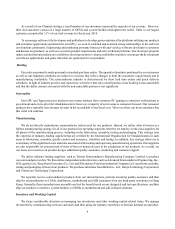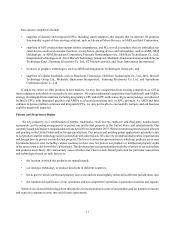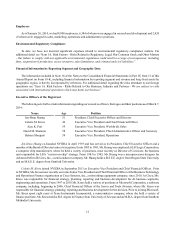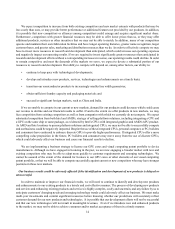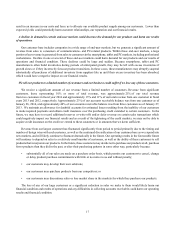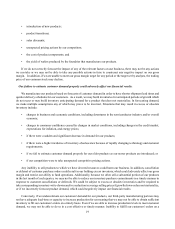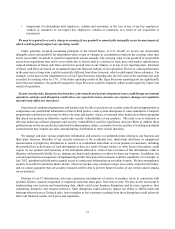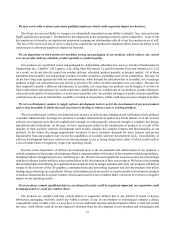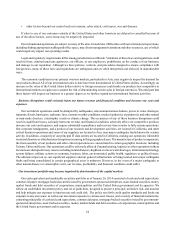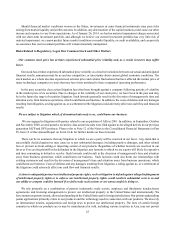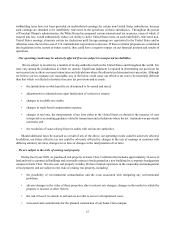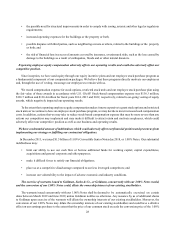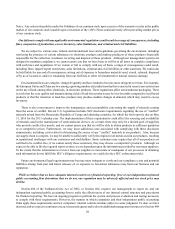NVIDIA 2013 Annual Report Download - page 163
Download and view the complete annual report
Please find page 163 of the 2013 NVIDIA annual report below. You can navigate through the pages in the report by either clicking on the pages listed below, or by using the keyword search tool below to find specific information within the annual report.19
• introduction of new products;
• product transitions;
• sales discounts;
• unexpected pricing actions by our competitors;
• the cost of product components; and
• the yield of wafers produced by the foundries that manufacture our products.
If we do not correctly forecast the impact of any of the relevant factors on our business, there may not be any actions
we can take or we may not be able to take any possible actions in time to counteract any negative impact on our gross
margin. In addition, if we are unable to meet our gross margin target for any period or the target set by analysts, the trading
price of our common stock may decline.
Our failure to estimate customer demand properly could adversely affect our financial results.
We manufacture our products based on forecasts of customer demand in order to have shorter shipment lead times and
quicker delivery schedules for our customers. As a result, we may build inventories for anticipated periods of growth which
do not occur or may build inventory anticipating demand for a product that does not materialize. In forecasting demand,
we make multiple assumptions any of which may prove to be incorrect. Situations that may result in excess or obsolete
inventory include:
• changes in business and economic conditions, including downturns in the semiconductor industry and/or overall
economy;
• changes in consumer confidence caused by changes in market conditions, including changes in the credit market,
expectations for inflation, and energy prices;
• if there were a sudden and significant decrease in demand for our products;
• if there were a higher incidence of inventory obsolescence because of rapidly changing technology and customer
requirements;
• if we fail to estimate customer demand properly for our older products as our newer products are introduced; or
• if our competition were to take unexpected competitive pricing actions.
Any inability to sell products to which we have devoted resources could harm our business. In addition, cancellation
or deferral of customer purchase orders could result in our holding excess inventory, which could adversely affect our gross
margin and restrict our ability to fund operations. Additionally, because we often sell a substantial portion of our products
in the last month of each quarter, we may not be able to reduce our inventory purchase commitments in a timely manner in
response to customer cancellations or deferrals. We could be subject to excess or obsolete inventories and be required to
take corresponding inventory write-downs and/or a reduction in average selling prices if growth slows or does not materialize,
or if we incorrectly forecast product demand, which could negatively impact our financial results.
Conversely, if we underestimate our customers' demand for our products, our third-party manufacturing partners may
not have adequate lead-time or capacity to increase production for us meaning that we may not be able to obtain sufficient
inventory to fill our customers' orders on a timely basis. Even if we are able to increase production levels to meet customer
demand, we may not be able to do so in a cost effective or timely manner. Inability to fulfill our customers' orders on a


